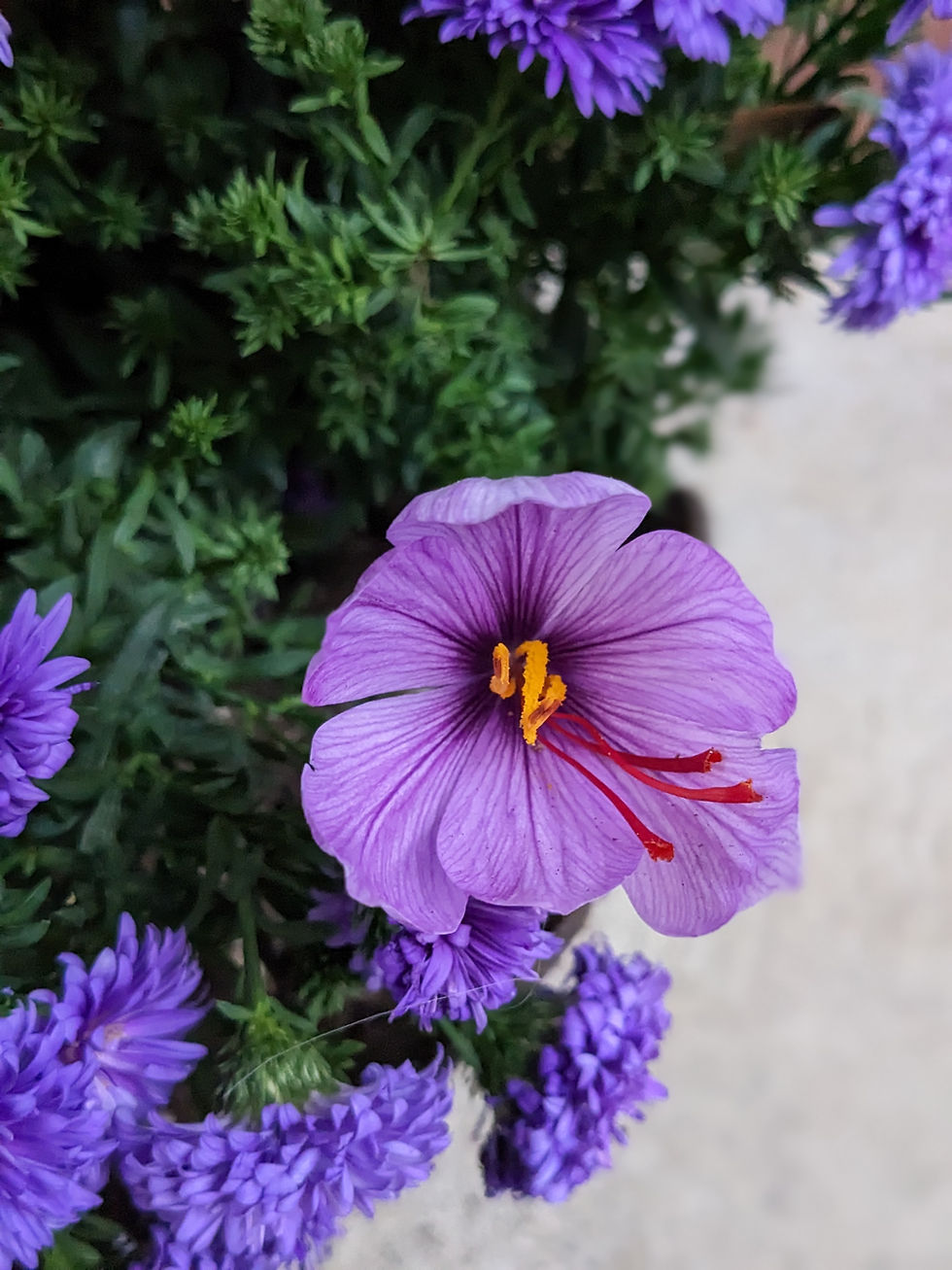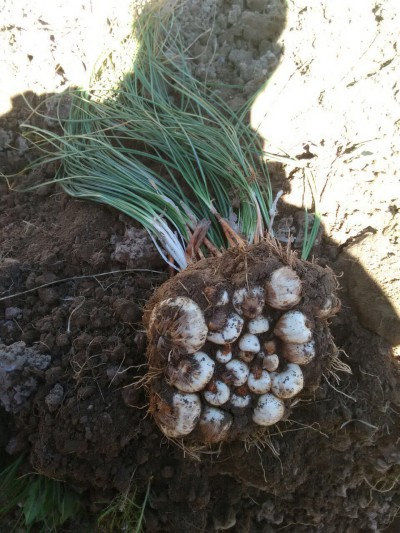Grow Your Own Saffron
- Chris Musser
- Jul 29
- 2 min read
For immediate satisfaction, you can’t beat saffron.
Most bulbs, corms, and rhizomes you plant in the fall won’t bloom until spring. But saffron is different! Plant saffron corms in September, and you’ll be harvesting the world’s most expensive spice just a month later. Each flower produces three saffron threads, and one pack of ten large corms provides enough for one paella and a fragrant curry in its first year.

East Portland Plant Buying Club offers medium, large, and jumbo corms. Medium corms will have some flowers in the first year and strong multiplication after. Best for: New growers who want results, but can wait for full yields in year two. Large corms flower in year one, great multiplication, and strong harvest potential. Best for: Serious home growers. Jumbo are the largest saffron bulbs available on the market, with maximum first-year yield. Best for: Chefs or anyone needing results fast.

Saffron Biochemistry and Reproduction
Saffron's biochemistry includes components like carotenoids (crocin, crocetin) and volatile compounds (safranal, picrocrocin). These compounds are not only responsible for saffron's color, taste, and aroma but also have potential therapeutic effects, including antioxidant and anti-cancer properties.
Crocin – gives saffron its bright color
Picrocrocin and safranal – responsible for its unique flavor and aroma
Saffron Growth Cycle
Saffron follows five main stages:
Sprouting
Flowering
Leaf development
Daughter corm formation
Dormancy
By understanding these phases, you can time your planting, harvesting, and dividing more effectively. Saffron corms remain productive for 3–5 years, multiplying each year into daughter corms. To keep your patch healthy, divide and replant every 2–3 years.

How to Plant Saffron
Portland’s dry summers are perfect for saffron. Here's how to plant for success:
Choose a sunny location where you do not irrigate in summer
Loosen and amend soil with compost or coconut coir
Plant 4 inches deep, pointy side up
If growing as a perennial, space 6 inches apart in 1-foot rows
Add ½" of compost annually to maintain soil fertility
Companion Planting and Rodent Protection
Saffron grows well with other sun-loving, drought-tolerant perennials. To reduce damage from deer, voles, and mice:
Plant near garlic and onions
Use Fritillaria imperialis Rubra Maxima (also available for pre-order)
Avoid planting near edible roots like carrots
Harvesting, Drying, and Storing
Saffron flowers emerge in September or early October, blooming over about three weeks.

Harvest on dry days
Pick only the three red stigmas (save the orange and white parts for dye or discard)
Dry stigmas at 210°F for 7–10 minutes, then cool completely
Store in an airtight, opaque container for at least one month before use
Properly stored, saffron lasts 1.5 to 2 years with no loss of quality.
Ready to grow your own?
This is one of the easiest bulbs to fall in love with. Whether you’re growing it as a fragrant fall bloom or as a flavor-packed pantry addition, saffron crocus offers a quick payoff and long-term rewards.



Comments